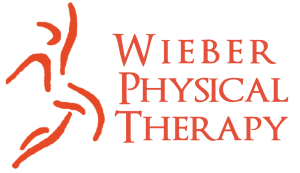
By Megan Westling DPT, OCS, RYT
Breathe. We’ve all heard it before. We may be telling ourselves that in a stressful situation, or telling it to friend who needs comfort. Have you ever wondered why we need to remind ourselves of this most basic human process?
When we experience stress, pain, or the difficulty of daily multi-tasking; our body goes into a fight or flight response. This reaction has a powerful grip over our nervous system and we may notice a rush of anxiety as our heart rate increases, our palms become sweaty, or a headache starts as our muscles tense up. This is a normal response. You can use your breath to help guide your mind and body back to a resting level to deal with this stress in a healthy way.
Breath has the power to calm. With a minute or two of breath observation and then breath modification, we can slow our mind down to be in the present moment, and work on processing one thought at a time. Our physical body will also respond and blood pressure, heart rate can come down to a baseline level, and our muscles can let go and find rest again.
So, what can you do on your own to improve your breath pattern to help with stress, fatigue, and muscle tension?
First, find a comfortable position. Maybe lying down with your knees over a pillow, or sitting in a supportive chair. Whichever position you choose, close your eyes. Just take a few breaths. No pressure. Just notice. Is your breath shallow or deep? Does the air feel warm or cold? Are you using your nose, mouth or both? Once you’ve taken the time to consciously recognize your breath, you may already start to feel a small change. You can take this a step further and try putting one hand on your heart and the other on your belly. Begin to work on deepening your breath, so that your bottom hand is doing most of the moving. When we breathe in, the air should come all the way down into the lungs, making our belly expand. On the exhale, that air should flow back out and the belly should contract. Now just work on this: breath in, belly rises; breath out, belly falls. This is diaphragmatic breathing. To get the most benefit out of your personal breath practice, try to dedicate at least 5 minutes just to breathing each day. This small commitment to being mindful of breath can help. It can help at rest- your breath will be able to better support your body functions. It can help in a stressful situation- come to your breath the next time you feel that anxiety, anger or stress-level creeping up. It can help when you are feeling physical pain- when your low back or headache is coming on, use your breath as a first line of defense. Breath isn’t the only answer, but it definitely can help. A lot.
If you have any questions about breath techniques, or want to learn more, please contact me: Megan Westling, DPT here at Wieber Physical Therapy.
megan@wieberphysicaltherapy.com



Leave a Reply
You must be logged in to post a comment.